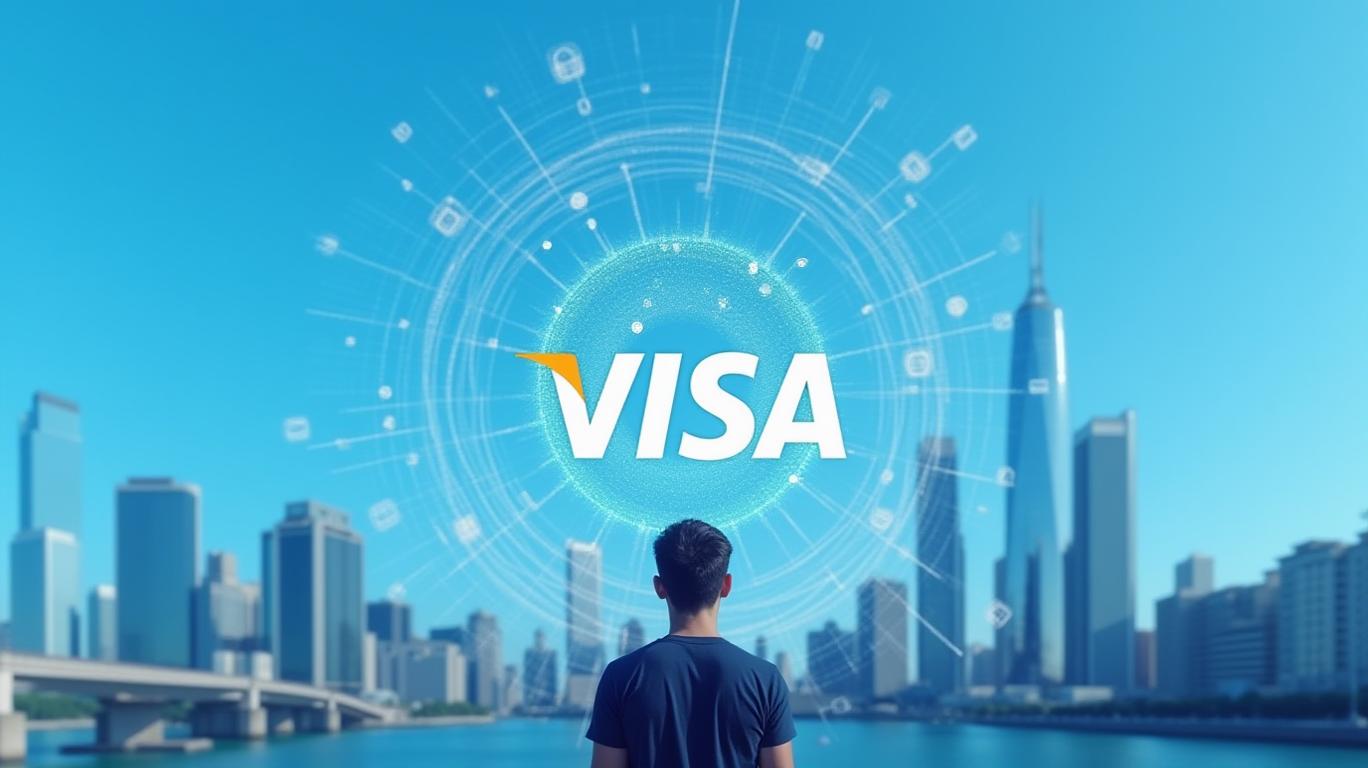Visa and VGS: Building the Future of AI-Driven Commerce with Unrivaled Security

Visa’s partnership with
Global Services (VGS) under the Visa 2025 initiative is a landmark move to redefine global commerce through AI-driven innovation and next-gen security. This collaboration, which extends Visa’s 35-year partnership with Nationwide Building Society and expands into blockchain, tokenization, and real-time payment systems, is poised to transform how the world transacts. Let’s dissect the investment opportunities and risks.The Partnership: A Blueprint for Modern Commerce
Visa and VGS are leveraging AI and blockchain to tackle longstanding pain points in payments: fraud, latency, and interoperability. The partnership with Nationwide Building Society, for instance, introduces account-to-account (A2A) payments alongside traditional card services. This integration of legacy systems with modern rails like real-time transfers and open banking positions Visa to compete with fintech disruptors while retaining institutional trust.
Visa’s stock has risen steadily, outperforming the broader market, reflecting investor confidence in its leadership. The partnership with Nationwide also underscores Visa’s commitment to community-focused initiatives, such as supporting small businesses—a strategic move to deepen customer loyalty in an era of financial fragmentation.
The Technology: AI and Blockchain at the Core
The Visa 2025 initiative hinges on two pillars:
1. AI-Driven Security:
- Dynamic 3D Secure Authentication: Uses machine learning to assess transaction risks in real time, reducing fraud by up to 30%.
- Tokenization Expansion: Replaces card details with unique identifiers, minimizing data exposure.
- Acquisition of Featurespace: Bolsters AI fraud detection, now integrated into Visa’s risk management systems.
- Blockchain Integration via Visa Tokenized Asset Platform (VTAP):
- Allows banks to issue fiat-backed tokens on public blockchains (e.g., Ethereum) and permissioned networks.
- BBVA’s Pilot: The Spanish bank will launch live Ethereum-based tokenized services in 2025, enabling smart contract automation and cross-chain interoperability.
Visa’s AI advancements also include partnerships with tech giants like Microsoft, OpenAI, and Stripe to scale personalized payment experiences. For example, the Visa Flexible Credential (launched with Affirm) lets users toggle between credit, debit, and Buy Now Pay Later (BNPL) options via a single card—a feature now live in Asia and expanding to the U.S.
Financials: A Strong Foundation for Innovation
Visa’s financial health is a key enabler. With a 97.77% gross profit margin and $37.62 billion in annual revenue, the company can invest aggressively in R&D. A £8 billion ($10.6 billion) five-year tech investment targets cybersecurity, AI, and real-time systems, ensuring Visa stays ahead of rivals like Mastercard and PayPal.
The company’s revenue has grown by an average of 8.5% annually since 2020, driven by cross-border transactions and digital payment adoption. The Visa Direct service now settles funds in under one minute—a critical feature for blockchain and AI-driven microtransactions.
Risks and Challenges
While Visa’s strategy is ambitious, risks loom:
- Regulatory Scrutiny: Blockchain and tokenization face evolving compliance hurdles, particularly around stablecoins and anti-money laundering (AML).
- Cybersecurity Threats: Despite robust defenses, high-profile breaches could erode trust.
- Competitor Imitation: Rivals may replicate Visa’s innovations, compressing margins.
Conclusion: A $37B Bet on the Future
Visa’s 2025 roadmap is a $37 billion vote of confidence in AI and blockchain as the future of commerce. By reducing fraud, slashing transaction times to under 200 milliseconds, and enabling seamless cross-border payments, Visa is not just adapting to trends—it’s setting them.
The partnership with Nationwide and the BBVA blockchain pilot are early proof points. With 65% global tap-to-pay penetration and AI tools like Visa Protect detecting 60% of undetected fraud in pilot markets, the infrastructure is already delivering.
Investors should watch for milestones: the April 2025 Product Drop event, VTAP’s live rollout, and Visa’s ability to scale partnerships with fintechs. While risks exist, Visa’s financial strength and first-mover advantage position it to dominate the next era of payments. For long-term investors, Visa remains a buy, with its stock primed to reflect the coming revolution.
Data as of Q1 2024. All figures sourced from Visa’s official releases and financial statements.

Comments
No comments yet